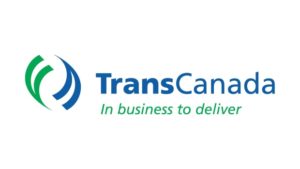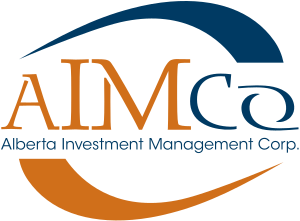In this look-back at 2020, we summarize our thoughts and opinions on some of the key stories in 2020- news, analysis and opinion by Abpolecon.ca. COVID-19 and a drastic drop in oil prices landed like a hammer on Alberta’s economy and political landscape.
News

28 February Provincial Budget was full of optimism- little did we know. I raised the flag of what’s Plan B?
31 March On the final day of the 2019-20 fiscal year, the Alberta cabinet passed Order in Council 104/2020 which authorized the “President of Treasury Board and Minister of Finance to make advances to or purchase securities of the Alberta Petroleum Marketing Commission.” Alberta taxpayers had bought a stake in the Keystone XL The Minister of Finance was authorized to borrow up to $2 billion “for the purpose of making advances to or purchasing securities of the Alberta Petroleum Marketing Commission in respect of the development of a hydrocarbon pipeline project.”
The price? A whopping $1.5 billion (Canadian) equity position plus backstopping a mouth-dropping $6 billion (Canadian) in loans. This investment was to be managed by the Alberta Petroleum Marketing Commission.
 In late April, AIMCo was in the news- unsettling reports that the investment manager may have lost up to $4 billion in a volatility trading strategy.
In late April, AIMCo was in the news- unsettling reports that the investment manager may have lost up to $4 billion in a volatility trading strategy.
17 June Then came the release of the Fair Deal Report giving more reasons for grievance to western and Alberta separatists. The report stressed achieving greater degrees of freedom from Ottawa for Alberta: provincial police force, an Alberta pension plan, referendum on equalization, and fuller exercise, like Quebec, of its constitutional authority.

29 June The Alberta Recovery Plan was was released with great fanfare with a fresh new website of glowing stories about creating jobs and getting Albertans back to work. The Economic Recovery Plan featured an early Christmas present for corporations who saw an very early reduction to the tax rate to 8 per cent effective 1 July for those lucky Alberta businesses earning profits.. Jack Mintz, who chaired the advisory committee, has been a consistent advocate of lower personal and corporate taxes, as well as a sales tax. (The original plan was to bring in the 8 per cent rate on January 1, 2022.) Business rejoiced but the heavy lifting was being done by the federal government.
27 August The First Quarter Update, which was two months late (don’t forget COVID), expected to a proxy budget was not. Unlike the Economic Recovery Plan which served as a prospectus to potential “foreign” investors, the Update illustrated a yawning gap to the revenue, excepting the ALGCB gains.

Questions about some of the corrected entries were reported in October by the Office of the Auditor General.
3 November In the last three months of 2020, the U.S. presidential election and the second wave of COVID-19 consumed most media oxygen. Then there was the strange case of Bill 44, a hammer to find out what is going on at ATB Financial.
![]()
Flying under the radar, the Finance Minister introduced Bill 44 the Financial Statutes Amendment Act, an innocuous sounding Bill with important implications for ATB Financial. Minister Toews described the Bill as reducing red tape for “Alberta job creators while improving the resilience of Alberta’s financial institutions.”
24 November The sales tax buzz grew during the Second-Quarter- now Mid-year Fiscal and Economic Update-as Minister Toews delicately stickhandled questions about a sales tax for Alberta. It was as if the media were thinking that perhaps the minister was going to address its timing. The Minister demurred to questioning from Graham Thomson but again referred to the importance of looking at the revenue side.
“Are you saying never?” Answer- No plans to introduce on a PST in the province “at this point of great economic challenge. I have made reference to the fact that down the road, it would make sense, to appoint a revenue panel, something like the Mackinnon report.”
Analysis
The 28 February Budget
The UCP government seems a little more focused on what is called “investor relations.” While the term had been used during the NDP inter-regnum, the October and the February budgets had a discrete section in the Fiscal Plan addressing debt (pp. 189-204). The Investor Relations function is becoming increasingly important as Alberta’s debt rises.
On 9 December 2020, outside House Sitting, Royal Assent was granted and the provisions of the Bill came into force that day. Throughout the debate, there was no commentary about the government’s new supervisory powers over ATB, including the Finance Minister’s opening summary of the Bill. This seems very odd when Alberta’s largest financial institution, at the end of 2020 and in the midst of a COVID-19 medical crisis, now is in a new environment where the Superintendent, not the Minister, has significant powers to direct ATB and to access information from ATB Financial.
Keystone XL Investment
While Kenney’s instincts have always been against government intervention, he chose to ignore that gospel, characterizing the investment as the “last chance to get a project done” He observed that “the failure of politics and policy,” the existence of “foreign funded environmental opposition,” “predatory dumping” by Russia and Saudi Arabia, and the absence of other private investors, prompted the Alberta government to act. Other touted benefits include a reimbursement “from TC Energy to Alberta 12 months after the oil is flowing through the pipeline although details were scarce. Kenney also assured Albertans that the investment would be sold at a profit.
AIMCo
How an investment manager views risk is central in any understanding of culture of an investment organization. The assumption of risk in a principal-agent relationship runs a continuum from risk averse to risk “hungry”. In understanding where AIMCo sits on this continuum, compensation structures are central.
AIMCo’s compensation structure is based on how AIMCo, not its pension fund clients determine “value-added” by the investment managers. AIMCo’s board selects specific benchmark indices and determines how much value was added by the corporation’s investment mangers. These particular measures may not incent the desired investment performance for the assets of 31 clients managed by AIMCo.
AIMCo’s complex reward structure is asymmetric meaning AIMCo staff aren’t penalized too much for losses, but there is a huge upside when value is added irrespective of risk.
Fair Deal
Whether you like Premier Jason Kenney or not, one must agree he has been a busy Premier. A Premier who sets out a playbook and is following this platform. Whether you like his policy platform or not, he is a man on a mission to transform Alberta seemingly from the ground up. Reading daily news releases from the Government of Alberta, this government likes to claim “Promise Kept!”


The Fair Deal page is a trove of information about the Government’s responses to the report (finalized before the Pandemic took hold) including recommendations underway, recommendations agreed to in principle, recommendations with support for further analysis, and recommendations that require modification. If anything, Premier Kenney is well organized and marching towards a hoped goal of economic growth unfettered by federal interference- in the words of a GOA website header- “fair deal in the Canadian federation and advance our vital economic interests”.
Fiscal Update and 2019-20 Financial, APMC & Redwater
With respect to the “Debt tolls,” APMC was to start paying the debt toll beginning 1 June 2018 irrespective of whether the refinery accepts delivery or processes bitumen or not. By 31 March 2019, APMC (e.g. the provincial taxpayer) had paid $261 million in debt tolls.

As to whether this contract was “onerous,” the OAG determined that the complex cash-flow valuation model, which spans 40 years is:
“inherently complex because the NPV (net present value) calculations depends on a number of variables, such as crude oil prices (WTI), heavy light differentials, ultra low sulphur diesel-WTI premiums, exchange rates, capital and operating costs, interest and discount rates, and the operating performance of the refinery compared to its capacity”
The foregoing means the “complex” model is open to gaming the NPV projections to positive results. While the OAG acceded to the APMC’s management sanguine analysis, the OAG said “there is significant uncertainty related to this calculation.”
The OAG then examined the project’s environmental liabilities. The OAG reminded its primary audience -MLAs that “Government has also accepted responsibility to clean up contamination on orphan sites created by industrial activity over the last century before current environmental laws and standards existed.”
Economic Recovery Plan
And how is it that Alberta has now arrived at that sad state (of dependence on foreign capital)? The easiest answer is: we’ve become too complacent and complicit about the soundness of Alberta’s economic foundation since the time oil prices quadrupled in the 1970s. Disposable income grew automatically whether you were a small business, truck driver, government worker, or corporate executive. Everyone could get a job whether fully qualified or not. (Admittedly, exceptions to this favourable situation occurred between 1986-1994 and since 2016.)

The conflict in Alberta’s central dilemma exists between a saver mentality, wishing to squirrel away resources for an unpredictable future, and the more frenetic mentality which likes to demonstrate they have “arrived.” The saver -steward never won the debate and Albertans are now paying that price.
Sales Tax Debate
Pros of a Sales Tax
- Cost of raising a dollar of revenue from a sales tax is much lower than with other taxes.
- Far more stable source of revenue than corporate and personal income taxes and non-renewable resource revenue. A 5 per cent rate would reliably raise about $5 billion each year.
- Even with a five per cent sales tax Alberta would still remain the lowest taxed jurisdiction in Canada.
- A sales tax captures consumption from inherited wealth not currently captured.
- would obtain revenue from visitors to the province who use public services and infrastructure.
- regressive nature of a sales tax can be mitigated by a refundable tax credit directed at low income individuals and families. Necessities can be exempted from the tax.
- Efficient to collect and difficult to avoid.
Cons of a Sales Tax
- Alberta voters oppose a sales tax. Is changing -recent CBC polling shows a significant minority of Albertans now support the tax.
- Elections– Alberta’s main parties believe if they introduced a sales tax would be defeated
- A sales tax is regressive and an additional layer of regressive taxation on items as tobacco, fuel, alcohol, and motor vehicle registration fees.
- Now is not the time e.g. COVID
- It would give politicians and government officials more revenue to waste on various pet projects.
- Imposing a sales tax to justify lower income taxes, as some economists suggest, would increase regressivity and income inequality.
- Provincial legislation requires a referendum on this issue.
ATB and Bill 44
However underneath the standard rhetoric of red tape reduction, job creation, and investment attraction lies a supervisory iron fist. New supervisory powers over ATB Financial were the result of “consultations with stakeholders” who identified the “many legislative and regulatory shortcomings that get in the way of the efficient function of this province’s financial sector.”
One would therefore expect to see a host of section repeals, but this is not in fact the case. There are more additions to powers and regulations while simple changes such as regulatory decisions being made by the Minister instead of Cabinet or the reduction of board size by two people will not in itself make system more resilient.
ATB’s regulatory context has been modeled after the federal Office of the Superintendent of Financial Institutions (OSFI). However, one gaping hole was always evident- that of explicit supervisory powers that OSFI has under its own Act and various federal statutes such as the Bank Act. Now a similar range of supervisory powers has been given to the Alberta Superintendent of Financial Institutions.
The difficulty facing the Finance Ministry is how to reconcile different roles the Ministry has vis-a-vis ATB Financial. First and foremost, ATB is an agent of the Crown and therefore ATB’s assets and liabilities flow back up to the Government. Control of agents is notoriously difficult and especially trying where the agent is a complex financial institution. The Government is also the guarantor of ATB’s deposit liabilities. Deposit guarantors are notoriously risk averse while the Agent’s management usually prefers more risk-taking. Another Ministry role is that of a shareholder who wishes strong returns for the capital invested in the venture, while minimizing risk. This profit-maximizing imperative is further complicated by desires of elected politicians to grow the economy, employ more Albertans and foster more investment through the lending process. In the case of ATB more than half of its branches and all its agencies are outside Calgary and Edmonton, key constituencies of the present government. A “normal”: shareholder would close uneconomical branches but rural MLAs would oppose such decisions. Then the Ministry has the regulatory/supervisory function which, in some respects, is similar to the risk management function within ATB itself. All these competing forces must be reconciled at the ministerial level or, in extreme circumstances, around the cabinet table.
Opinion
Budget 2020
The more delicate question for the rating agencies and the general public is the health of the energy sector and the residential and commercial real estate sectors. It is a delicate question as ATB Financial has a loan book which features $16 billion in residential loans, over $5.9 billion in commercial real estate loans, and $4.1 billion in energy sector loans. These features could be forgiven if energy was not a dominant force in Alberta’s economy today. However, with the perfect storm of low oil prices, a highly indebted population, and a worldwide recession, the response of rating agencies will be critical. Another blow to Alberta’s budget this fiscal year (2019-20) will be the financial impact of the financial market correction as noted. Global stock indexes are down at least 30 percent since the budget was released. However, there are no sensitivities given about changes to equity prices- a number that would be useful to rating agencies and to public finance analysts.
Keystone XL investment
From the Alberta taxpayers’ perspective, several things were left unclear. First, was TC Energy paying the Alberta taxpayer for the loan guarantee provided by an AA Low, sub sovereign borrower? [Moody’s Investor Services immediately changed TC Energy ratings outlook from stable to negative.] Second, at what price exactly did Alberta obtain its shares from TC Energy? Normally, the purchase price would be negotiated and disclosed to the market, but that information was missing. Before the announcement TC shares were trading below $58 and when the announcement was made on Tuesday, they shot up to close above $62 per share. Usually such a large investment was bought at a discount to prevailing market conditions. By the close of trading today (Wednesday, 1 April) the shares had receded to just shy of $58 a share. With close to a billion shares outstanding, these changes represent about $4 billion in market capitalization.
More fundamental is the continuing bet that Alberta politicians are making on the oil sands. Will the gamble pay off and will $30 billion in royalties come Alberta’s way? Sadly, this is unlikely for numerous reasons. First, with collapsing demand, world businesses will learn how “essential” oil, and oil from Alberta, is. Second, the climate emergency will move investment into renewables, a reality Alberta politicians still refuse to acknowledge. And third, despite the rhetoric from politicians and the oil sands industry, Alberta production is uneconomic at present price levels.
AIMCO
The proposed board review is completely inadequate to meet the concerns of public pension fund contributors and pensioners and Alberta taxpayers. A full review of the corporatization project is called for to assess whether AIMCo’s creation serves the interests of pensioners, contributors, or the interests a small group of employees, board members, and executives. Such a review would be lead by a senior jurist, an academic, and union and employer representation. These individuals should be scrutinized by the Ethics Commissioner to ensure there are no conflicts with AIMCo, compensation consultants, and the investment community.
Fair Deal
There are certain aspects of Canadian federalism that don’t work for Alberta. However, for the most part, the system works relatively well and is working during this current crisis. The origin of Alberta’s complaints is really about our system of free enterprise at public expense- railways, banks, grain dealers, oligopolistic telecommunications firms which treat certain underpopulated regions less fairly because there are fewer people to complain. Alberta’s decision to delegate its ownership of its resource wealth to the private sector while leaving the liabilities to taxpayers is really the problem.
Economic Recovery Plan
The ERP also promises: “Advancing Alberta’s position as a leader in environmental, social, and governance (ESG ) to demonstrate the critical role Alberta’s resources, technology and renewable opportunities will play in the transformation to a lower carbon economy.”
This is the first and only mention of ESG and is not likely an afterthought. Indeed, ESG is in common use within the corporate firmament and is being more seriously thought about. Not only are corporate executives requiring primers on ESG but so to are the institutional investors who include ESG in the determining financial value. But do senior people in the Alberta government, with access to the Premier, dare push this concept of “concession” forward?
While the reference to ESG is vague and minimal, its mention hopefully conveys to international investors that Alberta’s political leadership might acknowledge (maybe) the importance of ESG. Whether large banks and pension funds buy this little section on page 11 remains to be seen.
Past experience with Premier’s visits to international finance capitals has not been particularly fruitful. No funding for Teck Frontier and no funding of Keystone XL without a $1.5 billion equity provincial commitment with up to $6 billion in government loan guarantees.
More problematic for the government could be antipathy from the libertarian element in the UCP who views government investment and loan guarantees as apostasy. This seems to be a government that speaks of the entrepreneurship while quietly picking winners.
Sales Tax
It appears the ground is slowly shifting on the sales tax question. In June of this year, CBC Calgary reported on a poll conducted between 25 May and 1 June by Trend Research under the direction of Janet Brown the respected Alberta pollster. The survey of 900 respondents randomly selected from Trend Research’s online panel of more than 30,000 Albertans and is representative of regional, age and gender proportions in Alberta. Specifically they found that support for a PST rose from 25 per cent (strongly agree and somewhat agree) in March 2018 to 40 per cent. Significantly, persons polled in 2018 who strongly disagreed with a PST fell from 57 per cent to 41 per cent. Still 57 per cent of Albertans somewhat disagreed or strongly disagreed with bringing in a sales tax. The poll also found, not surprisingly, that NDP supporters were more likely to agree with the sales tax option as UCP supporters.
ATB Financial and Bill 44
The playing field, on which ATB and its government partner play, has now shifted. The coming months will be interesting as the province’s economy begins both to heal and to surface more borrower bankruptcies especially in commercial real estate, hospitality industries, and oil and gas lending at ATB.